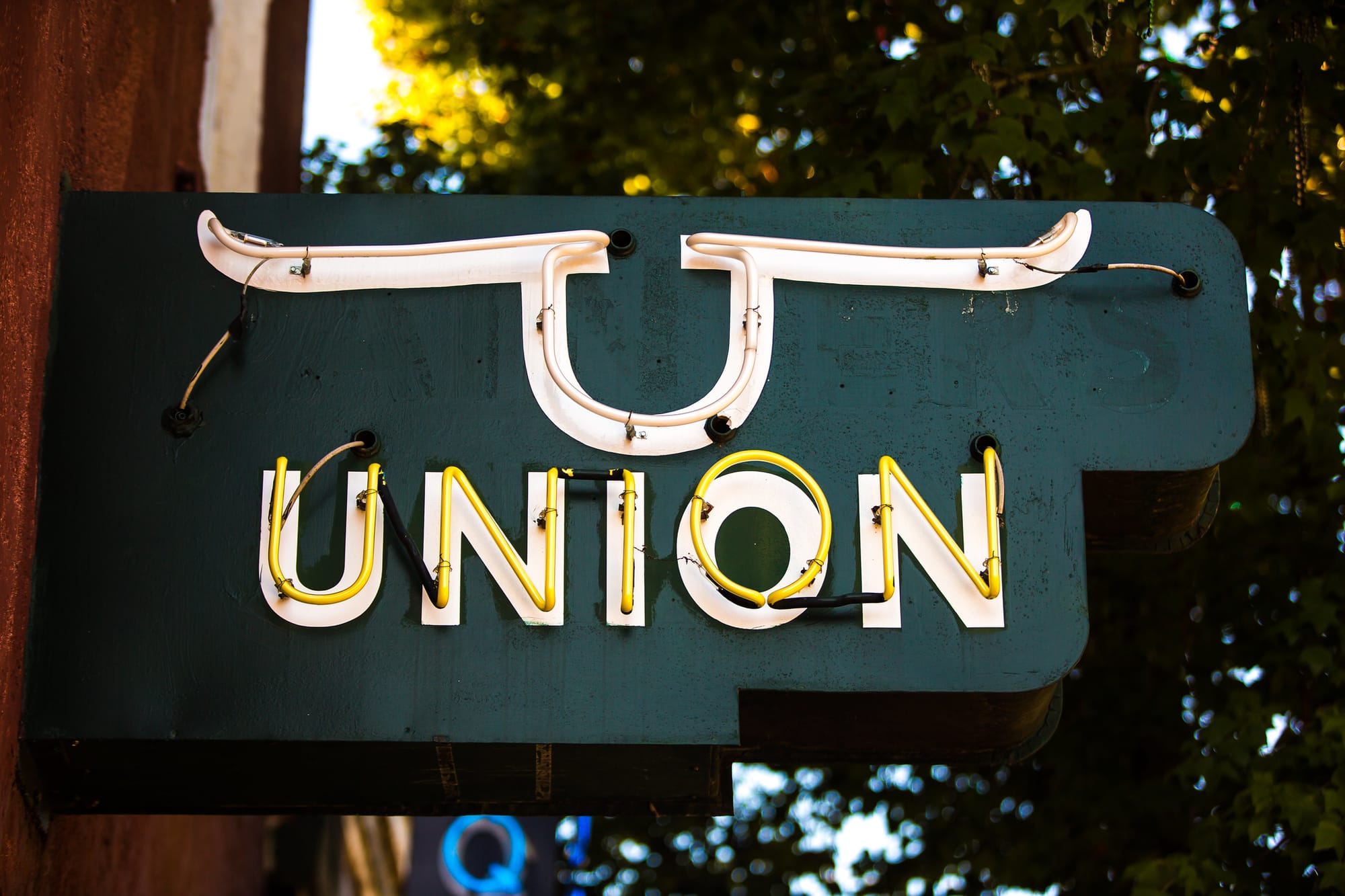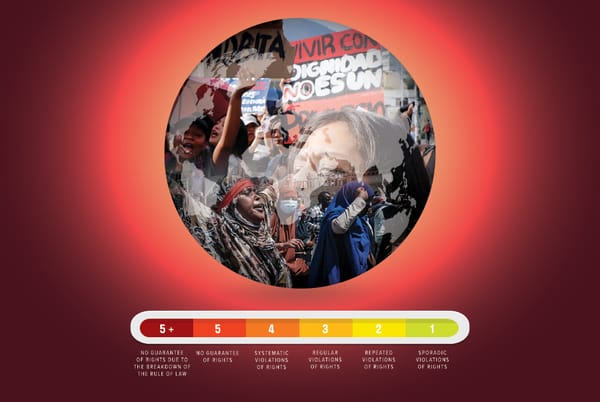
Last month, Angus Reid released some troubling results from a recently conducted survey gauging the opinions of Canadians about so-called “right-to-work” laws.
The non-profit pollster found that 43 per cent of respondents supported a right-to-work framework, wherein workers are permitted to individually opt out of paying dues in unionized workplaces.
That such a significant share of those polled expressed support for right-to-work should put unions on notice. Despite some evidence suggesting union popularity is strong, Angus Reid’s latest poll makes clear there is considerable work to do when it comes to educating the public about the importance of union rights.
Right-to-work, sometimes referred to as the “open shop,” is effectively a system that enshrines voluntary union membership.
In Canada, when a majority of workers vote to form a union, everyone in the workplace pays dues to financially support the union’s work. Even those who voted against having a union must pay dues because they too will benefit from the contract the union negotiates.
In other words, ours is a labour relations system based on the principle of “majority rules.” Dues are deducted from workers’ pay cheques by the employer and remitted to the union. This is referred to as “mandatory dues check-off,” or the “Rand Formula,” named after Supreme Court Justice Ivan Rand who authored the decision first setting out this arrangement in 1946.
When governments extended this formula in labour relations laws in the years after Rand’s decision, it was considered by many to be a significant victory. By securing reliable sources of funding, the dues check-off stabilized union finances and helped to facilitate the work of collective bargaining and the other representational activities in which unions regularly engage on behalf of members. It also allowed unions to pool their dues and devote funds to the work of fighting for policy reforms through the state. The entire labour movement, from individual bargaining units, to federations of labour, thus depends on member dues.
Additionally, the payment of dues gives union members a stake in their organizations and corresponding membership rights, such as voting and/or running in union elections, determining collective bargaining priorities, and democratically deciding how their union will spend its budget. Of course, some unions are more democratic and member-driven than others, but in theory, union membership typically confers a set of rights for workers vis-à-vis their own unions.
Right-to-work, by contrast, creates a situation where unions are unable to automatically collect membership dues from all workers in unionized workplaces. Instead, only those workers who “opt-in” to union membership are required to pay membership dues. In effect, it is a system that puts individual rights ahead of collective rights, in the process making it extremely difficult for unions to function.
In this way, right-to-work is a mechanism to undermine the financial stability and organizational power of unions. Such laws do this by creating a “free rider problem,” whereby individual workers may withhold their dues in an effort to reap the benefits of unionization without paying their share. In the absence of mandatory dues deduction, individual workers might assume it’s “rational” not to pay if they think the advantages of unionization will continue regardless.
Right-to-work laws are widespread in the United States and significantly undermine the power of organized labour in that country. Currently, there are 27 “right-to-work states” that allow individual workers to opt out of union membership and dues payments and, in workplaces where unions manage to persist, free-ride on their coworkers’ dues contributions.
The origins of right-to-work in the U.S. go back to 1947, when a Republican Congress passed the Taft-Hartley Act, rolling back many of the union gains won through the previous Wagner Act of 1935. Importantly, Taft-Hartley outlawed the “closed shop,” or mandatory membership in unionized workplaces, and permitted individual states to introduce right-to-work laws. The American South became a bastion of right-to-work, and remains so today, which many commentators have linked to the history and persistence of racism. Moreover, some states, such as Alabama, even enshrined right-to-work in their state constitutions. On the other hand, amid the growing popularity of unions in the U.S., Michigan recently repealed its right-to-work law, returning the state to a more pro-union footing.
In practice, right-to-work laws lead to falling union density and a weaker bargaining position for those unions able to hold out. Unsurprisingly, states with right-to-work laws have lower wages overall. It’s no wonder that unions and other critics often derisively refer to right-to-work as the “right to work for less.”
For these reasons, it is especially troubling to read that a significant plurality of those polled by Angus Reid would prefer right-to-work over Canada’s current system.
Among the entire sample of respondents, 43 per cent supported right-to-work, while 41 per cent opposed it. When it came to union members, there was somewhat more opposition to right-to-work, with 52 per cent against it and 35 per cent in favour. While the fact that a majority of sampled union members opposed right-to-work is good, 35 per cent of them being supportive of a law contrary to their material interests is less than ideal.
Public sector union members were the strongest opponents of right-to-work, according to Angus Reid. Fifty-seven per cent indicated they were against right-to-work, while 30 per cent expressed support. Again, that nearly one in three public sector union members expressed support for right-to-work should be cause for concern.
Shockingly, a greater share of sampled private sector union members supported right-to-work than opposed it (48 per cent vs. 40 per cent).
Among those who are not members of a union or professional association, 45 per cent expressed support for right-to-work, while only 33 per cent opposed it. In other words, private sector union members were even more likely to support right-to-work than their currently non-union counterparts, a truly unfortunate finding.
Across age groups and genders, Angus Reid found considerable disagreement over right-to-work. Older women (55 years and up) were the most against right-to-work, with 48 per cent indicating they either opposed or strongly opposed it. By contrast, men in the same age group were the most likely to support right-to-work (49 per cent).
Young men (18 to 34 years old) supported right-to-work, 42 to 36 per cent, while young women supported it less enthusiastically (37 per cent vs. 34 per cent — though 28 per cent indicated they were unsure).
Along political lines, opinions about right-to-work were largely as expected. A majority (56 per cent) of those who voted Conservative in the 2021 federal election supported right-to-work — though 30 per cent opposed it. Across the aisle, recent Liberal voters were more likely to oppose right-to-work (49 per cent against vs. 37 per cent in favour). NDP voters, who are expected to be the most pro-labour, opposed right-to-work, 60 per cent to 24 per cent. Nevertheless, that nearly a quarter of NDPers expressed approval for a system that would undermine workers’ rights and financially gut unions is unsettling.
Across provinces, the pollster found little variation. Saskatchewan registered the strongest right-to-work support, at 51 per cent (a sad data point for the birthplace of the Canadian Commonwealth Federation), while Manitobans expressed the strongest opposition to right-to-work (49 per cent against vs. 39 per cent in favour).
Thankfully, no Canadian jurisdiction has yet passed a right-to-work law. However, there are — and have been — right-wing parties and governments in favour of doing so. For example, the United Conservative Party (UCP) in Alberta supports right-to-work and adopted it as party policy in 2020. Moreover, the UCP government has already introduced a form of ‘right-to-work lite’ whereby unions are barred from automatically receiving what the government calls “non-core dues” (i.e., money that is used for union activities outside of direct representation).
In the past, federal Conservative Party leader Pierre Poilievre has expressed strong support for right-to-work. As is typical of faux-populist right-wingers, when it comes to unions, all pretence of ‘standing up for the little guy’ goes out the window.
The results of Angus Reid’s poll should be cause for concern among unions and labour supporters alike. Quite clearly, there is educational work to be done to convince the broader public — including current union members — of the value of unions and the various things they do to improve the lives of workers across the economy.
At the same time, these latest poll results should in part be interpreted in light of the decades-long attack on organized labour. Anti-union employers and right-wing politicians have worked tirelessly to weaken unions and undermine their capacity to win gains for workers. Unions themselves are not entirely blameless either. Many have not engaged in the necessary organizing and member empowerment to counteract these trends.
Given this recent history, it is understandable that some people — including some current union members — feel frustrated with organized labour and question the value of a system of compulsory union dues.
Of course, right-to-work is no solution. All legitimate unions in Canada rightly oppose such an arrangement in principle. But the more important question is whether unions are doing the work to ensure that their members are informed, empowered and activated enough to oppose right-to-work themselves.
Recent Class Struggle Issues
- February 12 | It’s Time For Anti-Scab Legislation In Every Jurisdiction
- February 5 | Saskatchewan Teachers Fighting For Working And Learning Conditions
- January 22 | The Union Wage Premium Remains Strong Across Canada
- January 15 | Public Sector Pensions In New Brunswick Are At Risk







